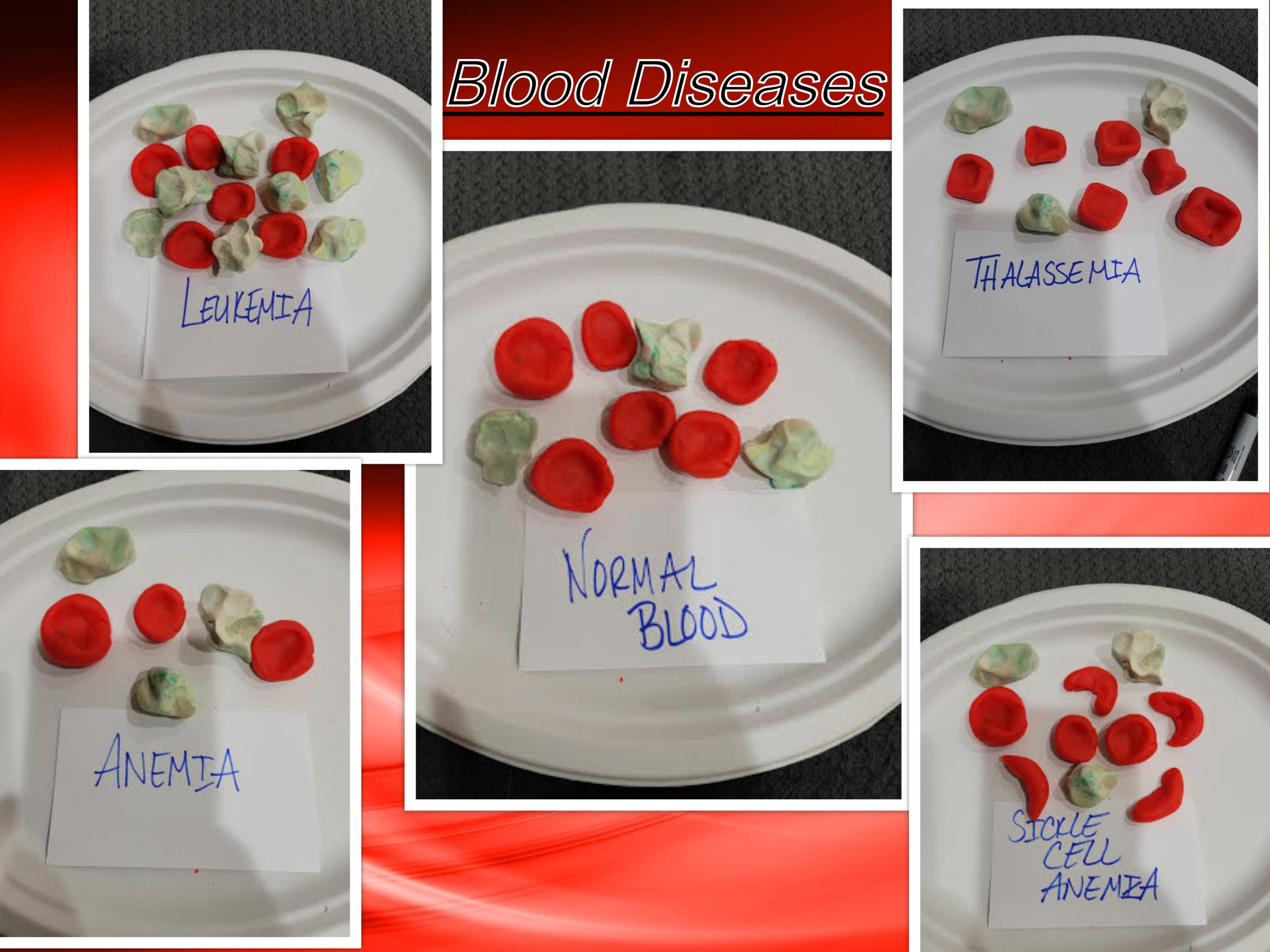I took a look at blood and how things can go wrong. I did this by looking at blood diseases and normal healthy blood. I specifically looked at the difference in the structure of the cells and the composition of the blood.


I took a look at blood and how things can go wrong. I did this by looking at blood diseases and normal healthy blood. I specifically looked at the difference in the structure of the cells and the composition of the blood.

The blood that runs through our veins is largely composed of red blood cells, which are anucleate cells that contain hemoglobin, which carries oxygen throughout the body. As seen in Nate’s STEAM projects, these red blood cells can be found in multiple forms. The first, most common, and most normal of these forms is the disc-like shape. There are abnormal shapes of red blood cells, but those typically come with a more dire diagnosis. In sickle-cell anemia, for example, the shape of the red blood cells turns from a disc to more of a crescent, and the cell’s ability to transport oxygen throughout the body is inhibited.
Red blood cells are important in not only shape but in number as well, and when there is a deficiency of red blood cells (a condition known as anemia), the amount of oxygen able to be transported around the body is decreased. Nate’s STEAM project depicts this in the lower left corner.
Other than red blood cells, blood is also composed of white blood cells, which, to no one’s surprise, must be present in the blood in a specific number as well. If there are too many white blood cells (a condition known as leukemia), the body’s ability to fight infection is impaired, and this can be seen in the top left corner.
Nate’s STEAM project is very well done. He was successfully able to simplify a difficult set of concepts into a simple yet effective clay model. The comparison between conditions and normal blood is easy to determine, as both are pictured in the model. Overall, this project was very well executed, and I think Nate deserves top marks all around.